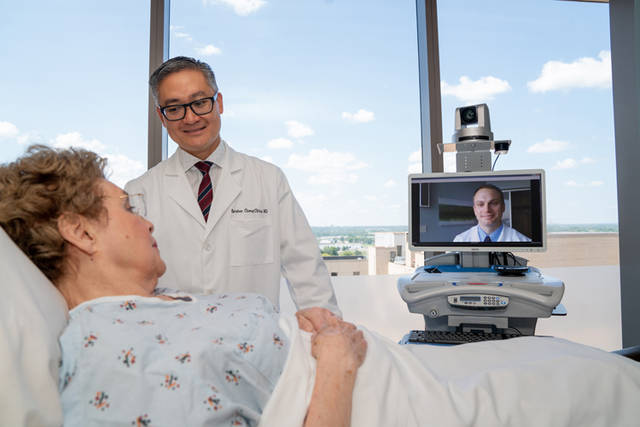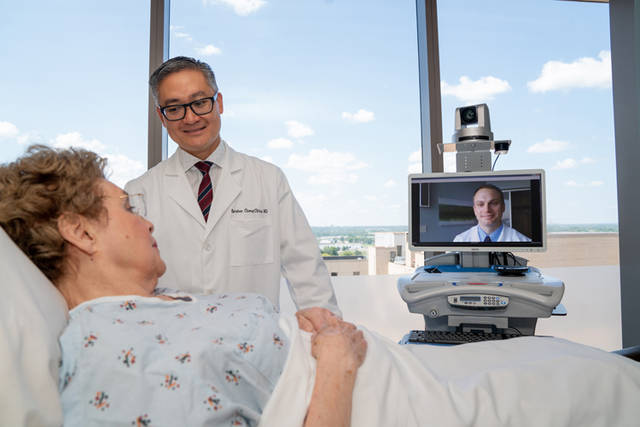

DAYTON – Premier Health announced the expansion of its TeleStroke Network to include Joint Township District Memorial Hospital, which is part of the Grand Lake Health System based in St. Marys.
The TeleStroke Network provides real-time access to a Premier Health stroke specialist at all hospitals within the network, even if they are not stroke centers. It also includes Miami Valley Hospital in Dayton, Miami Valley Hospital South in Centerville, Miami Valley Hospital North in Englewood, Jamestown Emergency Center in Jamestown, Atrium Medical Center in Middletown, Upper Valley Medical Center in Troy, Wayne HealthCare in Greenville and Wilson Memorial Hospital in Sidney.
The TeleStroke Network is a secure, two-way audio/video link that allows immediate access for a neurologist, emergency physician, patient, family and caregivers to see and talk with each other to assess a patient’s medical situation and discuss critical next steps. The off-site neurologist can view the patient’s vital signs, X-rays and other pertinent health information while visually examining the patient using a computer with a monitor and video camera that is wheeled to the patient’s bedside. The computer also provides access to the patient’s electronic medical record.
“With telemedicine, physicians who are specially trained in acute stroke care can be transported to the patient’s bedside instantly,” said Bryan Ludwig, MD, neurointerventional specialist at Miami Valley Hospital. “This allows for a rapid and thorough patient evaluation to determine if the patient is a candidate for acute stroke treatment.”
“Collaboration with the Premier Health TeleStroke Network is a logical next step as we continue to grow our Neurology Center with Drs. Natasha Alexander and Peter Maceroni,” said Kevin Harlan, president and chief executive officer of Grand Lake Health System, which serves people in west-central Ohio, including Auglaize and Mercer counties. “This collaboration will allow the Grand Lake Health System to continue meeting our community’s needs.”
Quick response to a stroke can be key to survival and recovery. Swift delivery of care can decrease long-term damage to the brain for an ischemic stroke and can be life-saving for a hemorrhagic stroke, especially before the blood vessel bursts.
Know the warning signs of stroke – use the FAST test:
Face: Ask the person to smile. Does one side of the face droop?
Arms: Ask the person to raise both arms. Does one arm drift downward?
Speech: Ask the person to repeat a simple sentence. Does the speech sound slurred or strange?
Time: If you observe any of these signs, call 911 immediately.





